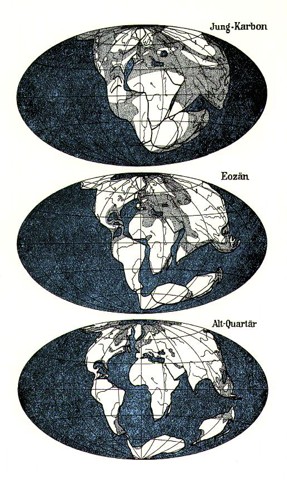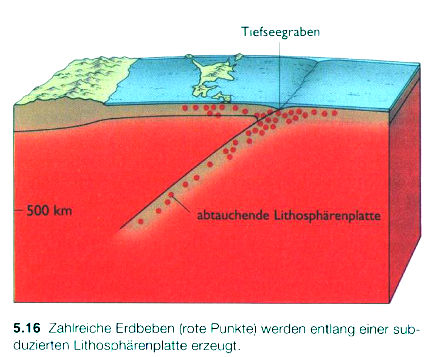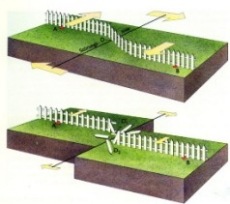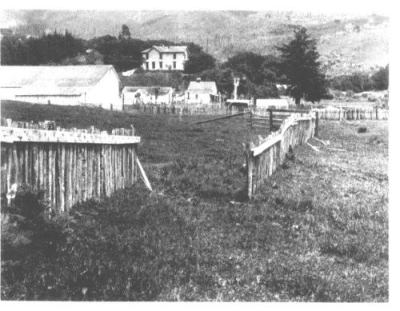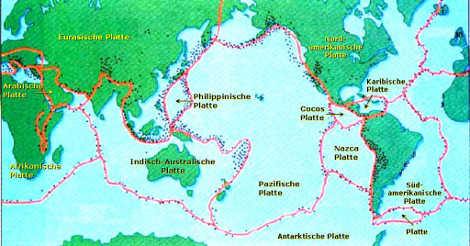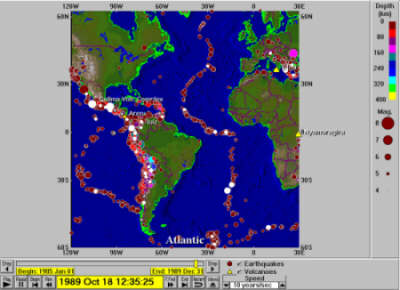1.4 Causes of earthquakes
The causes of most earthquakes are found in the shell-shaped construction of the earth. The solid ground beneath our feet is in fact only a thin layer. This lithosphere consists of the circa 10 to 70km thick outer crust and the upper part of the mantle of the earth, altogether a circa 100km deep layer. This layer surrounds the earth's sphere which has a diameter of about 12,700km and which contains a restless inner life.
Below this layer we find the thicker, but less brittle mantle. Beneath this is in turn the earth's core. The high temperatures of the earth's core heat the higher layers. Parts of the earth's mantle therefore are set in motion. In the harder layers of the earth's mantle the heat flows and circulates very slowly, yet their power is great enough to have torn apart the upper lithosphere into various plates during the course of the earth's history.
Even today these plates are moving against each other (on the seabed this can be up to several centimeters a year).
Necessarily neighboring plates are continuously and repeatedly lodged together. In such a place increasing pressure is built up throughout the years. When the pressure is great enough the hindrance is overcome and the relevant parts of the earth's crust are jerked out of place.
Not all earthquakes have the same cause. On the one hand the lithosphere's plates can displace each other near the earth's surface. In such a crust-quake the epicenter typically lies about 5 to 15km below the surface. Weak crust-quakes sometimes only show a sideways displacement on the earth's surface.
The most famous example marking such a displacement could be observed after an earthquake in the vicinity of Marin County, seen here in the example of a fence.
On the other hand, lithospheric plates can also move above and below each other. In the case of such a deep-focus earthquake, the epicentre can lie far towards the earth's centre, 200km down and more (compare Fig. 12). If the epicentre of the quake is below the seabed, another factor occurs. Waves can be caused which on their way to the shore - where we otherwise find calm waters - build up to a height of 12 meters. These 'tsunamis' cause incredible destruction when they reach the shore.
If one records those places where quakes occurred on a map over a long period of time the outlines of the tectonic plates emerge clearly. Here we see the so-called 'Ring of Fire' around the Pacific Ocean. Three continental plates converge just below Japan.
The mid-Atlantic ridge has not coincidentally got the same outline as Africa. With the aid of the "Seismik" program by Alan Jones one can show in slow motion how earthquakes have occurred along the ridge in the past.

